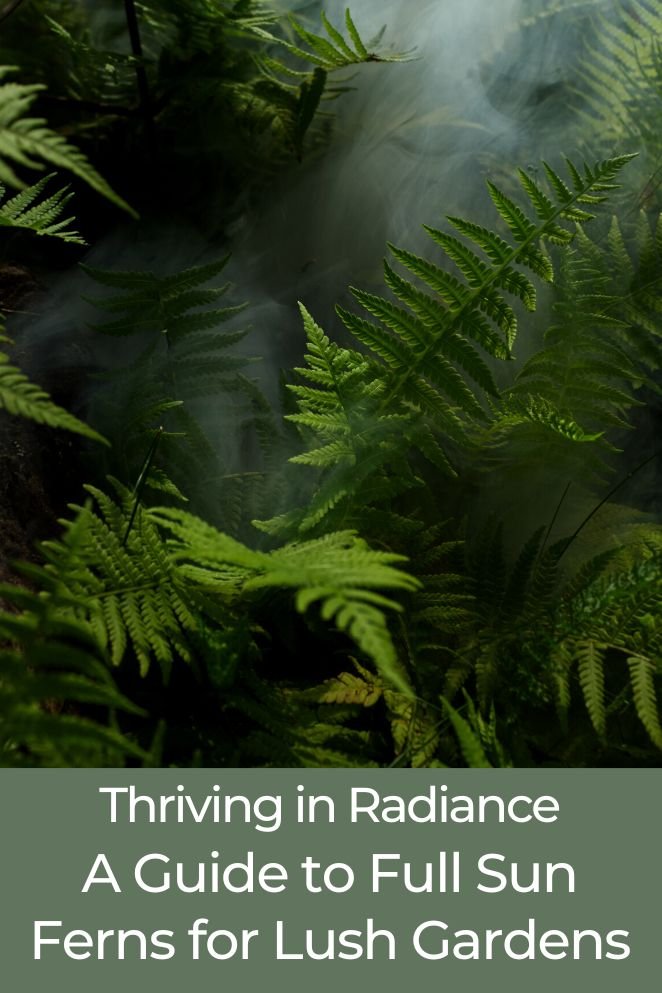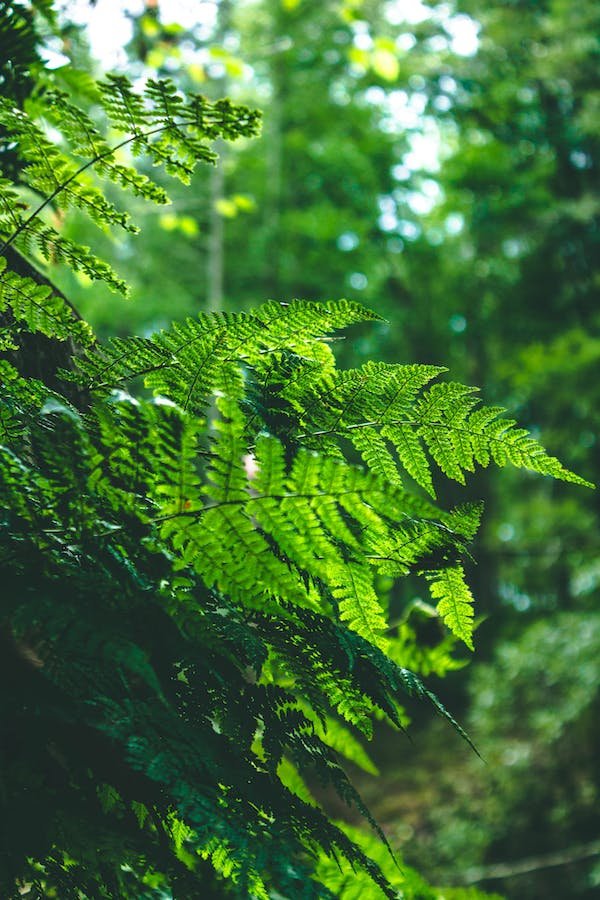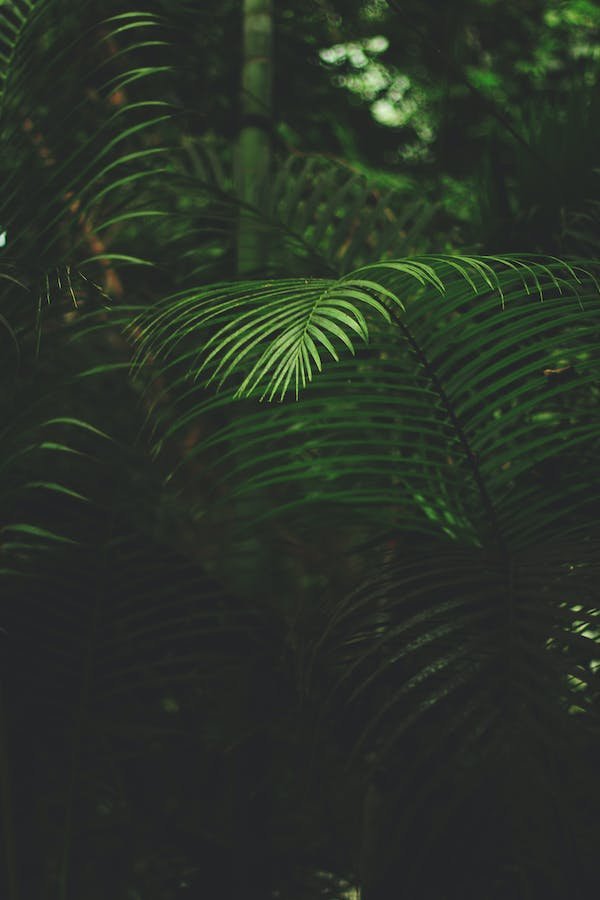
In today’s discussion, we’re exploring the fascinating realm of ferns, particularly those that thrive in full sunlight.
Contrary to the common belief that ferns prefer shaded areas, certain resilient species have a unique affinity for basking in the sun’s warmth.
Join us as we uncover the secrets of these sun-loving ferns, aiming to enhance the beauty of your sunny garden with their vibrant charm.
About Ferns
Ferns are a unique group of vascular plants that reproduce through spores, distinguishing them from seed-producing plants.
Known for their feathery fronds and intricate structures, ferns add a distinctive touch to the plant kingdom.
These plants lack traditional seeds but reproduce via spores found on the underside of their fronds.
Ferns come in a diverse array of sizes, spanning from petite filmy ferns standing at less than an inch to towering tree ferns surpassing 80 feet.
The fronds of ferns exhibit a remarkable spectrum, varying from delicate and translucent to sturdy and leathery.
Nature’s palette is at play here, offering colors that span from various shades of green to vivid blues, silvers, and even purples.
Ferns have adapted to diverse environments.
Some feature fronds with a coating of hair or wax, serving as a defense mechanism against water loss in dry conditions.
In contrast, other ferns have developed specialized structures that enable them to absorb water and nutrients directly from the air.
- Read also: A Guide to Growing Croton Mammy
- Read also: A Guide on How To Grow Cypress Trees

Physical Characteristics of Ferns
Leaves
The most striking feature is the leaves, called fronds.
Unlike typical leaves, they unfold from a curled state and often have a feathery or lacy appearance.
Certain ferns exhibit clusters of sporangia on the undersides of their fronds, known as sori.
These structures produce spores essential for reproduction. Sori showcases diverse arrangements, presenting patterns such as dots, lines, or patches, adding to the distinctive beauty of these ferns.
Stems
Ferns commonly possess rhizomes, which are stems beneath the soil that either spread horizontally or grow vertically.
These rhizomes serve the dual purpose of storing nutrients and facilitating the vegetative spread of ferns.
In addition, there’s variety in fern structures – some feature short, upright stems providing support to the fronds, while others boast climbing or twining stems.
Roots
Ferns rely on fibrous root systems, which serve the dual purpose of anchoring them securely to the ground and facilitating the absorption of water and nutrients.
Types of Ferns that Can Grow in Full Sun
Don’t be misled by common assumptions – ferns are not exclusive to shaded areas.
Surprisingly, some fern species have evolved to flourish in full sunlight, injecting a refreshing burst of greenery into the sunlit corners of your garden.
Let’s delve into a selection of these sun-loving ferns.
Japanese-painted Fern (Athyrium niponicum)
Discover a fragile fern adorned with lacy, silvery-blue fronds complemented by subtle green markings.
Flourishing in moist and well-drained soil, this fern thrives in partial shade, while also enduring some morning sun exposure.
Its distinctive color imparts a cool and refreshing ambiance to shaded areas, offering a delightful addition to outdoor spaces.
Cinnamon fern (Osmundastrum cinnamomeum)
Meet a deciduous fern graced by tall, arching fronds and cinnamon-colored spore stalks.
This fern thrives in moist soil, yet with sufficient watering, it gracefully tolerates exposure to sunlight.
Elevating your garden, introduces a dramatic vertical element, making it an ideal choice for enhancing borders or woodland gardens.

Lady fern (Athyrium filix-femina)
Meet a deciduous fern that sheds its fronds in the fall. Its fronds are noteworthy – large, lance-shaped, stretching up to 3 feet tall and 1 foot wide.
Delicately divided, they boast three tiers of pinnules, resembling small leaflets.
The color gracefully spans from light to medium green, and the texture is delicately papery.
Lady ferns thrive in the embrace of moist, shaded woodlands.
However, they also tolerate some exposure to sunlight, provided the soil remains consistently moist.
While not overly particular about soil type, these ferns favor well-drained soil enriched with organic matter.
Autumn fern (Dryopteris erythrosora)
A semi-evergreen that holds onto some fronds even in winter. Its fronds are a visual treat, broadly triangular and gracefully arching, reaching dimensions of 18-24 inches in both height and width.
As spring unfolds, new fronds emerge in a captivating coppery-red or pinkish hue, creating a stunning contrast with the mature, deep green fronds.
This reddish vibrancy gracefully transforms into green as the season matures.
Come autumn, another burst of color emerges as bright red sori or spore clusters, grace the underside of the fronds.
Similar to the lady fern, the fronds of the Autumn fern are finely divided, offering a delicate texture, yet with a slightly thicker and waxy feel.
Royal fern (Osmunda regalis)
Meet the Royal Fern, a towering giant that stretches up to 6 feet in height, with a luxurious spread of 3 feet.
Picture a magnificent clump of fronds, creating a visual spectacle reminiscent of a miniature tropical oasis.
A unique feature of the Royal fern is its dimorphism. This means it produces two distinct types of fronds:
- Sterile fronds: These are the showstoppers, gracefully arching and showcasing a deep, vibrant green color. They are finely divided, with two to three levels of pinnules, creating a lush, textured appearance.
- Fertile fronds: Shorter and sturdier, these upright fronds bear the responsibility of spore production. Their upper portion transforms into clusters of golden-brown sporangia, adding a contrasting touch to the overall look.
While deciduous, the Royal fern adds a final dramatic note before winter. Its fronds turn stunning shades of yellow, orange, and russet.
Bracken fern (Pteridium aquilinum)
Meet a sizable deciduous fern boasting tall, upright fronds that can reach an impressive 4 feet.
This fern is quite versatile, able to thrive in different soil types and showing resilience in the face of some drought conditions.
It effortlessly spreads through its rhizomes, making it an excellent choice for covering extensive areas or creating groundcovers.
Southern shield fern (Dryopteris marginalis)
Introducing an evergreen fern adorned with glossy, deeply lobed fronds showcasing rich shades of deep green.
This fern delights in moist soil conditions but gracefully withstands some exposure to sunlight.
It develops a clumping habit, making it an ideal choice for borders or enhancing the charm of woodland gardens.
Wooly lip fern (Cheilanthes tomentosa)
Meet an exceptional evergreen fern featuring silvery-gray, hairy fronds that bear a resemblance to lips.
Flourishing in dry, rocky environments basking in full sun, this fern is a standout choice for those looking to enhance their xeriscaping or rock gardens.
- Read also: A Comprehensive Guide on How to Use Soil Conditioner
- Read also: A Guide To The Types of Soil for Gardening

Conclusion
In gardening, ferns break the stereotype of thriving only in shaded areas.
The sun-loving varieties we’ve explored showcase the versatility of ferns, demonstrating their ability to adapt to various light conditions and enhance the natural beauty of your outdoor spaces.
Feel free to explore these ferns in your garden, letting the lush greenery kissed by the sun elevate your gardening experience.
Frequently Ask Questions
Absolutely! While many ferns prefer shade, there are several species, such as the Japanese Painted Fern and the Cinnamon Fern, that can thrive in full sun conditions.
Ensure they have well-draining soil, provide adequate water, and consider mulching to retain moisture. While they can tolerate sunlight, keeping them hydrated is essential.
Certainly! Sun-loving ferns can complement a variety of plants in your garden. Just ensure that their sunlight requirements align with the other plants in the vicinity.



